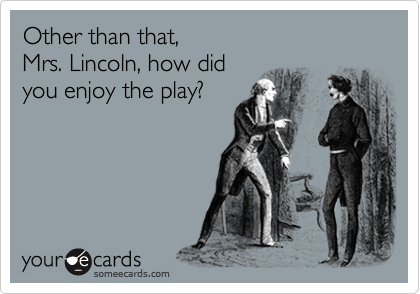Search Waypoint Resources
To NPS, or Not to NPS?

A prospective client recently posed this question: My CEO continues to focus on NPS, but it’s so volatile and so we’re looking for ways to smooth it out so we can better connect it to our bonus plan. How?
Not an easy question to answer in a blog…
First, remember that Net Promoter is a system more than a KPI. Many are familiar with “Net Promoter Score” as the equivalent of NPS, where we really need to focus on Net Promoter System – a discipline – as a process for understanding customer sentiment, and driving closed-loop processes that engage customers in identifying and implementing optimal improvements. Those that focus only on the metric will not be able to reap the rewards of genuine customer loyalty.
2. NP-Score began as a measure of “customer health” for B2C companies (read the appendix at the back of the book to see which industries were part of the research). Now, working exclusively with B2B firms for ~20 years, we know that NP-Score is not always the “best” measure for B2B firms, especially for companies that lack those customer-centric disciplines at the start. For companies with mature customer engagement practices and a genuine focus on true customer success, the behaviors – the system – are probably already in place in many ways and NP-Score can work. In the absence of those behaviors from all parts of the company you’re like to be looking at garbage-in-garbage-out: Are you getting feedback from all the right people and at the right time?
- For example, if you’re only asking for feedback from people that are using the product with you then you’d be missing out on getting feedback from your buying committee – the people that are responsible for approving purchasing decisions – is it ok that you’re not hearing from them? See Customer Experience: Fake It At Your Peril and 5 Ways B2B Companies Can Accelerate Growth (Part 2) for more on this.
- And then consider your response (participation) rate: Is it sufficient to only hear from 15% of the people you invited? Could it be that your “polls” are running like those in the US 2016 Presidential election incorrectly predicted the wrong winner? For more on this, including financial implications, see Is NPS Lying to You?
3. The NPS KPI needs to support the behaviors that your company wants. If you are measuring NP-Score, then you will get behaviors – any behavior – that drive that measure. Think of the time you went for car sales or service and how they encouraged you to give 10’s… that’s because they use JD Power Awards as the goal and NPS as the measure for that behavior… you and I might argue that it’s not the “right” behavior,” but it meets their goal of getting JD Power recognition.
4. As an example, if a desired “behavior” is to focus on the customer so the account team can grow the company’s footprint in an account, then NP-Score probably isn’t the only KPI that should be measured: You want to know if you’re inviting the right people (contacts roles/personae), and if you’re hearing back from those people (what we call coverage – see more at 2 Key Take-aways from Dell’s “Perfect Order” Journey). You should understand the growth strategy – expansion, profit, churn, renewal, etc. – and align to that. And the answer can’t be “all of the above” because I suspect that the CEO’s financial plan has very specific targets that the company must hit and we want to do our best to help hit those targets by leveraging customer feedback and strengthening relationships.
5. NPS is a relationship metric, and although many companies like to discuss “Transactional NPS” which is largely bogus, especially in B2B, where something like this is used: “Based on this experience, how likely are you to recommend Acme?” (or the company might skip the first part and just ask the recommend question in a transactional context such as customer support or service). This always reminds me of the expression, “Other than that Mrs. Lincoln, how was the show?” How can you possibly throw out all other considerations in your recommendation of a company and just focus on one part? It doesn’t matter that Mary Todd Lincoln might have enjoyed the production of Our American Cousin at Ford’s theater – that’s irrelevant in the grand scheme. So be sure you aren’t executing a “transactional” or touchpoint-oriented process and claiming it to be a “relationship” (NPS) program. In B2B, the key difference between the two (beyond the tactical items such as questionnaire, reporting etc.) is around *who* is providing that feedback and when (what context) that feedback is acquired. Most companies pay little attention to who is providing feedback (responding to the survey). Hint: without active recruiting, the respondents are unlikely to be the members of the buying committee (i.e. those with whom you want strong relationships).

B2B is generally marked by a group of people — the buying committee — that form an account. Be careful when you use the word “customer” — to whom are you referring: Users, buyers, the account itself, decision makers, everyone…?
6. So… what to do? Well, we usually start with well-defined objectives (outcomes) and then define the metrics associated with those objectives. It’s not sufficient to say “We want to know what our customers think. Are they happy?” In B2B there is often no “customer!” Usually there are a group of contacts working together in an organization that collectively make buying decisions. In B2B this is known as an “account.” People (contacts) come-and-go from the account all the time, and the account remains an entity we’re working with (not to say that those contacts aren’t important, especially when they do move elsewhere!). In other words, the word “customer” is confusing… who exactly do you mean, and what do you want to learn from them? We typically would define and craft KPIs as part of an executive workshop that will first focus on knowing the company goals (usually financial in nature), and how the company is resourced and executing to those goals. Then we can design a feedback program that will provide leading indicators so the company can course-correct to optimally meet those goals. NP-Score *might* be one of the ideal KPIs, but we don’t know how and why until we understand the behaviors we want to drive.
7. By the way, once we know what behaviors and metrics the program needs to encourage, then we can spec program requirements: questionnaire, contact and account management strategy, supporting technology, etc. Far too many companies like to start with the survey and technology and then mold process around it…. Isn’t that backwards?